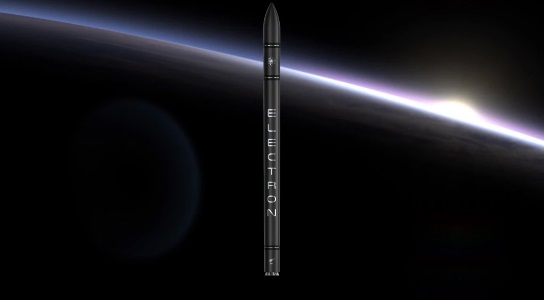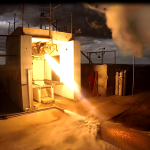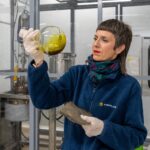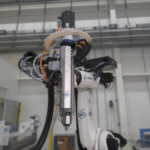Commercial space company Rocket Lab has unveiled their Rutherford engine. Rutherford is comprised of primarily all 3D-printed components, uses a batter-powered, electric turbopump to drive its propulsion and is capable of 4,600 pounds of thrust.
The Rutherford engine will power propulsion for both stages of Rocket Lab’s Electron rocket, a 20-meter rocket created out of carbon composites. The lightweight rocket is capable of delivering 100kg payloads to a 500km Sun-synchronous orbit or 400kg payloads to lower Earth orbits, according to the company’s founder, Peter Beck. The company’s ambitious goal is to begin a schedule next year that would involve launching up to 100 payloads a year from its launch facility in New Zealand, at a price of just $4.9 million per launch.
“We started this program with 2 fundamental goals: Reducing cost and increasing frequency,” Beck told me.
To accomplish this, the company is focused on the ability to quickly mass produce its rockets. The Electron’s carbon composite body allows for molding. Using 3D-printing also radically reduces the time it takes to build the engine.
“Typically a rocket engine takes months,” said Beck. “We can build a Rutherford in 3 days.”
Rutherford is a liquid-fueled engine, powered by a mixture of kerosene and liquid oxygen. But the key feature that distinguishes it from other rocket engines is that it uses a battery to power brushless DC motors in the turbopump. Turbopumps are what propel fuel into the combustion chamber of a rocket engine at the correct flow rate and pressure. Typically, they use pressurized gas to power a turbine to do so, and that process is often coupled to the combustion itself, making the workings of the engine tightly coupled. That also creates some tough engineering problems with respect to the thermodynamics of the propulsion.
“Using brushless DC motors and lithium battery cells, Rutherford’s turbopumps decouple the thermodynamic problem immediately,” said Beck. “We’re able to do things never capable before in a propulsion system. It takes complex piece of machinery and makes it simple.”
Of course, designing the engine this way comes with its own set of challenges. The electric motor that powers the pump is about the size of a can of soda, but operates at 50 horsepower. “That’s not a trivial thing,” notes Beck.
The company’s launch plans have attracted attention from both investors and potential customers. Last month, the company closed a series B round for an undisclosed amount with K1W1, Khosla Ventures, and Bessemer Venture Partners. And according to Beck, the company has already received more than 30 commitments for launch.
Rocket Lab will begin test flights of its Electron rocket later this year, and aims to begin its commercial launches in 2016.

















